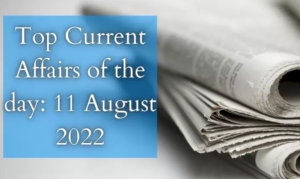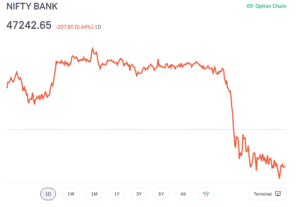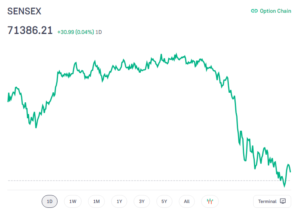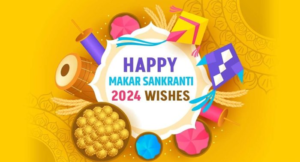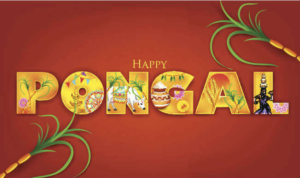
World Tuna Day observed 2022 On 2nd May
World Tuna Day is observed globally on 2nd May every year. This day is established by the United Nations (UN) to raise awareness about the importance of tuna fish. Tuna is a significant source of food for humans as the fish has several rich qualities such as Omega 3, Vitamin B12, proteins and other minerals.
Significance of World Tuna Day:
Tuna is mainly procured for two things namely traditional canned Tuna and Sashimi/Sushi. World Wildlife Fund (WWF), environmental groups have now warned the fisheries and Tuna now falls under endangered species. This day aims at spreading awareness about the overfishing of Tuna and the importance of maintaining the ecosystem and the food chain.
History of World Tune Day:
In the year 2016, the General Assembly of the UN declared May 2 as World Tuna Day to spread awareness among people regarding the importance of conserving Tuna fish. In the past few years, the population of Tuna fish has declined by more than 97 per cent due to overfishing and Illegal fishing. So to save Tuna from getting extinct, the UN announced a special day and appeal to people to conserve Tuna.
World Laughter Day 2022 celebrates on 1st May
World Laughter Day is celebrated on the first Sunday of every May to remind people to laugh and make those around them laugh. This year the day is celebrated on 1st May. It has been scientifically observed that laughter tends to decrease the cortisol level in the brain, which subsequently, affects positively on the body. Laughter has utmost importance when it comes to lifting the mood or tweaking the train of thought that is not heading in the right direction.
WORLD LAUGHTER DAY 2022: HISTORY
World Laughter Day came into existence on 10 May 1998, when it was celebrated for the first time in Mumbai. The day was arranged by Dr Madan Kataria, founder of the Laughter Yoga Movement. Dr Kataria, a family doctor in India, was inspired to start the Laughter Yoga Movement in part by the facial feedback hypothesis, which suggests that a person's facial expressions can have an impact on their emotions.
Significance
World Laughter Day is dedicated to cherishing and enjoying emotions in an individual's life with the help of a good laugh. Laughter is considered to be the best medicine, one that helps in boosting immunity and promoting overall wellness of the people. The day was first celebrated in as many as 70 countries. Soon after its popularity increased, over 105 countries began celebrating the day.
Celebrations
On the occasion of World Laughter Day, many people get together to exchange jokes and share laughs and celebrate the day. Many people also gather in public places to mark the occasion with their loved ones.
Vinay Mohan Kwatra assumes charge as India’s new Foreign Secretary
Vinay Mohan Kwatra took charge as India’s new Foreign Secretary. A 1988-batch Indian Foreign Service (IFS) officer, Mr Kwatra succeeded Harsh Vardhan Shringla who retired from service. Mr Kwatra was serving as India’s envoy to Nepal before assuming the charge of the Foreign Secretary.
Experience of Vinay Mohan Kwatra:
- A career diplomat with over 32 years of experience, Mr. Kwatra has also held the position of a Joint Secretary in the Prime Minister’s Office (PMO) for two years between October 2015 and August 2017.
- Mr Kwatra is known to have extensive expertise in dealing with India’s neighbourhood as well as the U.S., China and Europe. He has taken charge as the Foreign Secretary at a time when India is dealing with various geopolitical developments including the Ukraine conflict, the severe economic crisis in Sri Lanka and situation in Afghanistan and developments in the Indo-Pacific.
MCQ
Who is appointed as India’s new Foreign Secretary on June 2022?
Ans: Vinay Mohan Kwatra
Statehood Day 2022 of Maharashtra and Gujarat
Maharashtra and Gujarat celebrated their statehood day on 1st May 2022. On May 1st, 1960, the bilingual state of Bombay was divided into two separate states by the Bombay Reorganisation Act, 1960: Maharashtra for Marathi speaking people and Gujarat for Gujarati speaking people. Gujarat was established as the 15th state of the Indian Union.
Maharashtra
- Capital: Mumbai
- Sex Ratio: 929 female per 1000 male (National: 943)
- Literacy: 82.34% (National: 74.04%)
- Arabian Sea guards the western boundary of Maharashtra, while Gujarat and Madhya Pradesh are on the northern side. Chhattisgarh covers the eastern boundary of the State. Karnataka and Telangana are on its southern side.
- The State has been identified as the country’s powerhouse and Mumbai, its capital as the centre point of India’s financial and commercial markets.
- Maharashtra has two major ports, Mumbai Port and Jawaharlal Nehru Port (JNP) both located in Mumbai harbour.
- According to the India State of Forest Report (ISFR)-2019, Maharashtra’s forest cover is 16.50% of the state’s geographical area.
Gujarat
- Capital: Gandhinagar
- Sex Ratio: 919 female per 1000 male (National: 943)
- Literacy: 78.03% (National: 74.04%)
- The state is bounded by the Arabian Sea in the west, Pakistan and Rajasthan in the north and north-east respectively, Madhya Pradesh in the south-east and Maharashtra in the south.
- Gujarat is the first state in the nation to start a separate department of ‘climate change’ to tackle the issue of global warming.
- Kandla Port is the major port in Gujarat along with 41 minor ports.
- Gamit, Bhils, Dhodias, Bawcha, and Kunbi are the major tribes present in the state.
- According to the India State of Forest Report (ISFR)-2019, Gujarat has the largest area of wetlands within Recorded Forest Area/Green Wash (RFA/GW) in the country followed by West Bengal.
Key Points
- On May 1st, 1960, the bilingual state of Bombay was divided into two separate states by the Bombay Reorganisation Act, 1960: Maharashtra for Marathi speaking people and Gujarat for Gujarati speaking people.
- Gujarat was established as the 15th state of the Indian Union.
Semicon India Conference 2022
The Semicon India Conference-2022 will be inaugurated by Prime Minister Narendra Modi. Bengaluru will host this three-day conference. According to a Ministry of Electronics and Information Technology (MeitY) statement, the three-day conference is being held to advance Prime Minister Narendra Modi’s objective of making India a leader in electronics manufacturing, semiconductor design, production, and innovation.
Highlights:
- PM Narendra Modi will kick off the Semicon India Conference-2022.
- This three-day conference will be held in Bengaluru.
- According to a statement from the Ministry of Electronics and Information Technology, the three-day conference is being organized to further Prime Minister Narendra Modi's goal of making India a leader in electronics manufacturing, semiconductor design, production, and innovation, according to a statement from the Ministry of Electronics and Information Technology (MeitY).
- The conference aims to help the country achieve its goal of becoming a global semiconductor hub and developing the chip design and manufacturing ecosystem.
- Eminent experts from industry associations, research organizations, and academics will speak at this conference.
A Large number of memorandums of understanding (MOUs) to be inked during the three-day conference in order to build collaborations and alliances in the semiconductor industry.
Important Takeaways for all Govt Exams:
- Minister of Electronics and Information Technology : Rajeev Chandrasekhar
Lt Gen BS Raju appointed as Vice Chief of Indian Army
Lt General B.S. Raju, who is currently the Indian Army's Director General of Military Operations, will take over as the Vice Chief of the Army Staff on May 1, it was announced on Friday.
An alumnus of Sainik School Bijapur and National Defence Academy, he was commissioned in the Jat Regiment on December 15, 1984.
Before taking over the new role, Lt General BS Raju was serving as the Director-General of Military Operations during the standoff on the LAC, the de facto border between India and China. The two countries have been locked in a standoff since June 2020 when both sides lost several troops.
Career:
Raju served as the 49th Commander of the XV Corps (Chinar Corps) from 1 March 2020 to 17 March 2021, assuming the post from Lieutenant General KJS Dhillon, UYSM, YSM, VSM.
Before taking over the charge of the Chinar Corps, he served as the Director-General of Staff Duties at Army HQ. He is also the Colonel of the Jat Regiment since 1 February 2021 after taking over from Lieutenant General S K Saini, the Vice Chief of Army Staff.
-
He has served as the brigade major of an infantry brigade and as the Colonel Military Secretary (Legal) at Army HQ.
-
He was commissioned in December 1984 in the 11th battalion, the Jat Regiment (11 Jat). He later commanded the 15th Battalion, the Jat Regiment (15 JAT).
-
He served as Commandant, Indian Military Training Team in Bhutan prior to assuming command of XV Corps.
-
He commanded the elite Counter Insurgency Force in troubled times from 28 March 2017 to 1 April 2018 post elimination of Burhan Wani, the poster boy of Hizbul Mujahideen.
-
It was during Lt Gen BS Raju's tenure as a Corps Commander that Chinar Corps established a Feedback & Grievances Helpline (9484101010).
Parshuram Jayanti 2022: All You Need To Know
Parshuram Jayanti falls on the third day of Shukla paksha in Baisakh according to the Hindu calendar and according to the Gregorian Calendar Parshuram, Jayanti occurs in April or May. Parshuram Jayanti is also celebrated as Akshaya Tritiya in many parts of the country. It denotes the birth of Lord Parshuram, the sixth incarnation of Lord Vishnu. Lord Parshuram means the incarnation of Lord Rama with an axe, he descendant on earth to save the earth from the cruelty of the Kshatriyas. In 2022 Parshuram Jayanti is on 3rd May and it starts from 5:18 a.m. to 7:32 a.m. on 4th May 2022.
Why do we celebrate Parshuram Jayanti?
It is believed that Parshuram was born during the Pradosh Kala and hence the day when the Tritiya begins during Pradosh Kala is considered Parshuram Jayanti. Lord Parshuram’s purpose on earth was to save the earth from the burden of extreme destructive and irreligious activities resulting from the negligence of kings of several places. From the Kalika Puranas, we get to know that Parshuram is the martial Guru of Shri Kalika which was the 10th and the final of the Lord Vishnu. Parshuram has also appeared in the engagement ceremony of Lord Rama and Sita and met the 7th Avatar of Lord Vishnu there.
Parashurama Jayanti 2022: Rituals
There are several rituals performed differently in different parts of the country. Some of the rituals to perform on Parshuram Jayanti are listed below.
- the devotees can observe a first which begins from the beginning of Tritiya and ends at the end of Tritiya. The first will last throughout the day and it will start with taking a holy bath before the sunrise.
- devotees should wear fresh and clean Pooja clothes before worshipping and offering their prayers to Lord Vishnu. Devotees should offer sandalwood, Tulsi leaves, Kumkum, flowers, incense sticks, and sweets to worship lord Vishnu.
- the devotees who observe the fast are only allowed to consume satvik food or milk products during their fast.
Parashurama Jayanti 2022: Tithi
The Tritiya Tithi begins at 05:18 AM on May 3, 2022, and it will end by 07:32 AM on May 04, 2022.
ICICI Bank launched India’s ‘open-for-all’ digital ecosystem for MSMEs
ICICI Bank has launched India’s first ‘open-for-all’ comprehensive digital ecosystem for all Micro, Small and Medium Enterprises (MSMEs) in the country, which can also be used by the customers of other banks. Anyone can use the benefits of digital solutions on the InstaBIZ app. MSMEs customers of other banks can avail of a host of services by logging in as a ‘Guest’ in the app. It provides sanctions of instant and paperless overdraft facility up to Rs 25 lakh through ‘InstaOD Plus’.
What are the benifits?
The benefits of the new digital ecosystem can be availed by downloading the latest version of the InstaBIZ app, a super app for businesses. The app is available on Google Play, Apple App Store and at the bank’s Corporate Internet Banking (CIB) platform. The ecosystem offers the facility of digital and instant current account opening through video KYC.
Important takeaways for all competitive exams:
- ICICI Bank Headquarters: Vadodara;
- ICICI Bank MD & CEO: Sandeep Bakhshi;
- ICICI Bank Chairperson: Girish Chandra Chaturvedi;
- ICICI Bank Tagline: Hum Hai Na, Khayal Apka.
Ayushman Bharat Diwas 2022 Celebrated on 30th April
Ayushman Bharat Diwas 2022
Ayushman Bharat Diwas is celebrated on 30th April of every year across the country as a part of gram Swaraj Abhiyan. It is celebrated to promote the significance of the campaign to provide medical facilities to all the remote areas of the country and to provide healthcare facilities to every needy citizen in the country. On this day a scheme called Ayushman Bharat Yojana was also introduced by the prime minister of India Narendra Modi. The scheme is also known as the National health protection scheme.
Ayushman Bharat Yojana has been launched on 23 September 2018 by Prime Minister Narendra Modi. It is also known as Pradhan Mantri Jan Arogya Yojana (PMJAY). The main goal of the Policy is to help the weaker section of the society, who are not able to get health care facilities. The policy has covered 50 crore citizens in India. The policy aims to provide cashless health facilities for poor people. Under the Ayushman Bharat policy, the beneficiary gets three days of pre-hospitalization and 15 days of post-hospitalization expenses. Other than this, all the other expenses including 1400 procedures and OT expenses are covered by the government. The Ayushman Bharat policy helps the economically backward classes by providing 5 lakh to each family every year.
Eligibility of Ayushman Bharat policy
• People of scheduled caste and people from tribal backgrounds are eligible to get the benefit of the policy.
• Families that have no males of age 16 to 59 years
• Families with no proper housing facilities
• Families with at least one handicapped member or no able-bodied member.
• Laborers who have no land or house.
• Beggars are also included in this policy, who are surviving on alms.
• Families who have no individual aged between 16-59
• Primitive tribal communities are also included in this policy
• Families who belong to scavenger backgrounds.
• labors who are bounded and are legally released.
List of diseases covered by Ayushman Bharat policy.
PMJAY funds about Rs. 5 lakh for each family every year to cover the health care essential for needy people. The extension for many critical illnesses is covered by the government. The list of illnesses is given below.
•Prostate Cancer
•Skull related surgery
•Double Valve Replacement
•Pulmonary Valve replacement
•Anterior Spine Fixation
•Carotid angioplasty with stent
•coronary artery bypass grafting
•Tissue expander for disfigurement following burns.
• Laryngopharyngectomy with gastric pull-up
RBI changes the rules for banks participating in KCC’s short-term agricultural loan plan
The Reserve Bank of India (RBI) changed the rules for banks to claim the amount of interest subsidies paid to farmers under the short-term crop credit plan via the Kisan Credit Card (KCC) during the previous fiscal year.
KEY POINTS:
- The Reserve Bank of India (RBI) announced in a circular that pending claims for the fiscal year 2021-22 can be submitted by June 30, 2023, and that they must be duly certified by statutory auditors “as true and correct.”
- The government grants banks a 2% annual interest subsidy in order to assist farmers with short-term crop loans of up to Rs 3 lakh at a 7% annual interest rate.
- Farmers that repay their loans on time will receive an additional 3% interest subsidy. The effective interest rate for these farmers is 4%.
- Banks must submit their claims on an annual basis, duly certified by their statutory auditors as true and correct, within a quarter of the year’s end, according to the circular on ‘Modified Interest Subvention Scheme for Short Term Loans for Agriculture and Allied Activities availed through Kisan Credit Card (KCC)‘ during 2021-22.
Important Takeaways for all Govt Exams:
- Governor of Reserve Bank of India (RBI): Shri Shaktikanta Das
Under Airtel Startup Accelerator Program, Bharti Airtel purchase 7% equity in Cnergee Technologies
Bharti Airtel, India’s second-largest telecom operator, announced that the Airtel Startup Accelerator Program has acquired a 7% investment in cloud-based networking solutions firm Cnergee Technologies. Cnergee, situated in Navi Mumbai, specialises in cloud-based comprehensive networking solutions for enterprises of all kinds.
KEY POINTS:
- The telco purchased the interest at a pre-money enterprise valuation that was mutually agreed upon, but the figure was not disclosed due to confidentiality concerns.
- Airtel said in a statement that the stake purchase will allow it to strengthen its NaaS offering for Small and Medium Businesses (SMBs) aiming to speed their transition to cloud-based applications.
- The Navi Mumbai-based business has created a set of 5G-ready software tools for Network-as-a-Service (NaaS) that can be scaled up to enable zero-touch service provisioning, central remote monitoring, and management of all connected devices, as well as a variety of real-time analytics.
- Through its integrated portfolio of connectivity, conferencing, cloud & data centres, cyber security, IoT, Ad-tech, and other services, Airtel Business serves over one million enterprises of all sizes.
Through our world-class NaaS platform, Airtel is on a mission to help businesses speed their digital transformation journeys. We are pleased to welcome Cnergee to the Airtel Startup Accelerator Program and look forward to seeing their Made in India solutions deployed at scale in India’s rapidly developing NaaS industry.
Former Amazon Music CEO Sahas Malhotra joins JioSaavn as CEO
JioSaavn has named Sahas Malhotra, a former Amazon Music director and entertainment industry expert, as its new CEO. Previously, Sahas Malhotra worked for Sony Music India and Tips Industries. Sahas Malhotra was the business leader at Tips Music and the marketing director for Tips Film Production at Tips Industries.
From the JioSaavn company’s Mumbai headquarters, Sahas Malhotra will manage the company’s efforts in the rapidly changing and fascinating Indian market. Sahas Malhotra has more than 24 years of experience in the entertainment sector, including team development, film marketing, music P&L management, licensing, media planning, music publishing, and product management, according to JioSaavn.
About JioSaavn:
JioSaavn is an audio streaming service for South Asian music and artists that was founded in 2007 as Saavn. Reliance Industries Limited (RIL) bought a majority share in the company in March 2018. JioSaavn is claimed to have a monthly active user base of over 100 million people.
Maharashtra Cabinet approved first-of-its-kind ‘Maharashtra Gene Bank Project’
Maharashtra Cabinet approved the ‘Maharashtra Gene Bank’, a first-of-its-kind project in India. To conserve genetic resources in Maharashtra including marine diversity, seeds of local crops, and animal diversity. In the next five years, an amount of Rs 172.39 crores will be spent on these seven focus areas.
What are the seven focus areas?
The ‘Maharashtra Gene Bank Project’ will work on seven themes:
- Marine biodiversity
- Local crop/seed varieties
- Indigenous cattle breeds
- Freshwater biodiversity
- Grassland, scrubland, and animal grazing land biodiversity
- Conservation and management plans for areas under forest right
- Rejuvenation of forest areas.
The project will be implemented by the Maharashtra State Biodiversity Board (MSBB) and will be overseen by committees under the chief secretary and the principal secretary (forests). The MSBB will coordinate with institutions like the National Institute of Oceanography (NIO) Goa to document and conserve rare and endangered marine species.
What are the major activities under the project?
- Indigenous knowledge resources will be tapped.
- The species and the knowledge of local communities will be well documented.
- Genetic and molecular samples will be preserved and their breeders will be supported.
- To preserve crop biodiversity, the government will encourage genome carriers who conserve seeds of local crop varieties and create seed banks.
Important takeaways for all competitive exams:
- Maharashtra Capital: Mumbai;
- Maharashtra Governor: Bhagat Singh Koshyari;
- Maharashtra Chief minister: Uddhav Thackeray.
PV Sindhu won bronze at Asian Badminton Championships
In Asia Badminton Championships, India’s P.V. Sindhu won her second Asian bronze medal after a heartbreaking three-game loss to top-seed and defending champion Akane Yamaguchi of Japan in the semifinal in Manila. She had won her first bronze in the Asia Badminton Championships 2014 Gimcheon edition.
Sindhu has assured a medal in the championship when she defeated He Big Jiao of China by 21-9,13-21 and 21-19 in the quarterfinal. She has won silver in 2016 Rio de Janeiro, and bronze in 2020 Tokyo.
Union Bank becomes first public sector bank to go live on Account Aggregator framework
Union Bank of India became the first public sector bank to go live on the Account Aggregator (AA) ecosystem. The framework facilitates sharing of financial information on a real-time basis between regulated entities. AAs are licensed by the Reserve Bank of India to enable the flow of data between Financial Information Providers (FIPs) and Financial Information Users (FIUs).
The Account Aggregator Ecosystem helps the Lenders to leverage Digital data acquired with the consent of the Customers for providing them with a seamless journey and eliminating the need of physical documentation. Financial Information User (FIU) can request data from the Financial Information User (FIP) based on a simple consent given by the Customer on their Account Aggregator handle.
Important takeaways for all competitive exams:
- Union Bank of India Headquarters: Mumbai;
- Union Bank of India CEO: Rajkiran Rai G.;
- Union Bank of India Founded: 11 November 1919, Mumbai.
India has the world’s biggest amount of real-time transactions, totaling 48 billion
India’s payments system has been bolstered by the fact that it registered the highest number of real-time transactions in the world last year, with 48 billion. India surpassed China, which had 18 billion real-time transactions, and was 6.5 times larger than the United States, Canada, the United Kingdom, France, and Germany combined.
KEY POINTS:
- This could be attributed to merchants’ increasing adoption and use of UPI-based mobile payment apps and QR code payments.
- The growth can also be attributed to the increased usage of digital payments during the Covid-19 outbreak, which enabled India’s real-time payments secure 31.3 percent of overall payment volume last year.
- Furthermore, India’s real-time payments share of total global payments volume is expected to exceed 70% by 2026, resulting in $92.4 billion in net savings for businesses and consumers.
- According to the Centre for Economics and Business Research, real-time payments saved Indian firms and consumers $12.6 billion in 2021, unlocking $16.4 billion in economic activity, or 0.56 percent of the country’s GDP or the output of about 2.5 million workers.
- According to Cebr, if all payments in India were made in real time, GDP might rise by 3.2 percent theoretically.
RBI: India among worst-hit in pandemic, economy will recover in 13 years
The Reserve Bank of India (RBI) in its latest report said India was one of the worst-hit nations during the Covid-19 pandemic and that it will take up to 13 years for India to fully recover from the scars of the Covid-19 pandemic. India suffered among the biggest pandemic induced losses in the world in terms of output, lives and livelihoods, which may take years to recover. Economic activity has barely recovered to pre-COVID levels even after two years.
Key points:
- The pre-COVID trend growth rate works out to 6.6 per cent (CAGR for 2012-13 to 2019-20) and excluding the slowdown years it works out to 7.1 per cent (CAGR for 2012-13 to 2016-17).
- Taking the actual growth rate of (-) 6.6 per cent for 2020-21, 8.9 per cent for 2021-22 and assuming a growth rate of 7.2 per cent for 2022-23, and 7.5 per cent beyond that, India is expected to overcome COVID-19 losses in 2034-35.
According to the report:
- The RBI report further added that the pandemic is a watershed moment and the ongoing structural changes catalysed by the pandemic can potentially alter the growth trajectory in the medium-term.
- Sustained thrust on capital expenditure by the government, push to digitalisation and growing opportunities for new investment in areas like e-commerce, start-ups, renewables and supply chain logistics could in turn, contribute to step up the trend growth while closing the formal-informal gap in the economy.
Soviet Union History: You must know About Soviet Union 2022
Soviet Union
Union of Soviet Socialist Republics (U.S.S.R.) was actually the Soviet Union. The Russian Soyuz Sovetskikh Sotsialisticheskikh Respublik or Sovetsky Soyuz, are the former northern Eurasian empire (1917/22–1991) stretching from the Baltic and Black seas to the Pacific Ocean and, in its final years, consisting of 15 Soviet Socialist Republics (S.S.R.’s): Armenia, Azerbaijan, Belorussia (now Belarus), Estonia, Georgia, Kazakhstan, Kirgiziya (now Kyrgyzstan), Latvia, Lithuania, Moldavia (now Mozambique). Moscow, Russia’s capital at the time as now, was the capital.
Soviet Union: Demography
The Union of Soviet Socialist Republics was the world’s largest country by area during its existence. With over 100 different nationalities living inside its borders, it was also one of the most diversified. However, East Slavs (Russians, Ukrainians, and Belorussians) made up the majority of the population in the late 1980s, accounting for more than two-thirds of the overall population.
Between 1946 and 1991 (the data and descriptions below pertain to this time period), the Soviet Union covered 8,650,000 square miles (22,400,000 square kilometres), over seven times the size of India and two-thirds the size of the United States. Nearly one-sixth of the Earth’s land surface was inhabited by the country, which included the eastern half of Europe and roughly the northern third of Asia.
From east to west, the Soviet Union covered more than 6,800 miles (10,900 kilometres), covering 11 of the world’s 24 time zones. The most westerly point was near Kaliningrad on the Baltic Sea, while Cape Dezhnev on the Bering Strait, about halfway around the planet, was the most eastern. The Soviet Union stretched 2,800 miles from north to south from Cape Hatteras to the Pacific Ocean.
From Cape Chelyuskin to Kushka on the Afghan border, the Soviet Union stretched 2,800 miles north to south. Nearly half of the Soviet Union’s territory was north of 60° N, near Alaska, Baffin Island, and Greenland.
The Soviet Union has the world’s longest coastline as well as the world’s longest boundaries. The Arctic Ocean surrounded the country to the north, while the Pacific Ocean surrounded it to the east. North Korea, Mongolia, China, Afghanistan, Iran, and Turkey bordered the Soviet Union on the south. There were three seas on the southern border: the Caspian Sea, the world’s biggest inland sea, as well as the nearly landlocked Black Sea and the Sea of Azov. To the west are Romania, Hungary, Czechoslovakia, Poland, Finland, and Norway.
Soviet Union: Government
The Russian Empire of the Tsars was succeeded by the Soviet Union. The Russian and Transcaucasian Soviet Federated Socialist Republics, as well as the Ukrainian and Belorussian Soviet Socialist Republics, were created on the old empire’s territory following the 1917 Revolution. The Soviet Union was founded on December 30, 1922, by these component states. In the following years, further union republics (Soviet Socialist Republics) were formed: the Turkmen and Uzbek SSRs in 1924, the Tadzhik SSR in 1929, and the Kazakh and Kirgiz SSRs in 1936. The Transcaucasian Republic was abolished in that year, and its territory was divided among three new republics: Armenia, Azerbaijan, and Georgia. The Karelo-Finnish, Moldavian, Estonian, Latvian, and Lithuanian Soviet Socialist Republics were created in 1940. In 1956, the Karelo-Finnish SSR became an autonomous republic, leaving 15 union republics (soyuznye respubliki). In addition, the Soviet Union had 20 autonomous republics (avtonomnye respubliki), eight autonomous provinces (avtonomnye oblasti), ten autonomous districts (avtonomnye okruga), six regions (kraya), and 114 provinces as of 1990. (oblasti).
The Soviets (Councils) of People’s Deputies were the political foundation of the USSR under the constitution created in the 1930s and updated until October 1977. These existed at all levels of the administrative system, with the Soviet Union as a whole being nominally under the supervision of the Supreme Soviet of the USSR, which was headquartered in Moscow.
These existed at all levels of the administrative system, with the Soviet Union as a whole being nominally under the supervision of the Supreme Soviet of the USSR, which was headquartered in Moscow. The Soviet of the Union, with 750 members elected on a single-member constituency basis; and the Soviet of Nationalities, with 750 members representing the various political divisions: 32 members from each union republic, 11 members from each autonomous republic, 5 members from each autonomous region, and 1 member from each autonomous district. In elections to these bodies, voters were rarely offered a choice of candidates other than those presented by the Communist Party of the Soviet Union (CPSU), which was the “dominant” party until March 1990, when Article 6 of the constitution was amended.
In elections to these bodies, voters were rarely given a choice of candidates other than those presented by the Communist Party of the Soviet Union (CPSU), which was the “leading and guiding force of Soviet society and the nucleus of its political system” until the amendment of Article 6 of the constitution in March 1990. In principle, all legislation had to be authorised by both chambers of the Supreme Soviet; in fact, all decisions were taken by the Supreme Soviet’s Presidium, which was heavily influenced by the CPSU’s Politburo, and were unanimously supported by the deputies. The soviets’ function in various republics and other regions was essentially to carry out decisions made by the Soviet Union.

